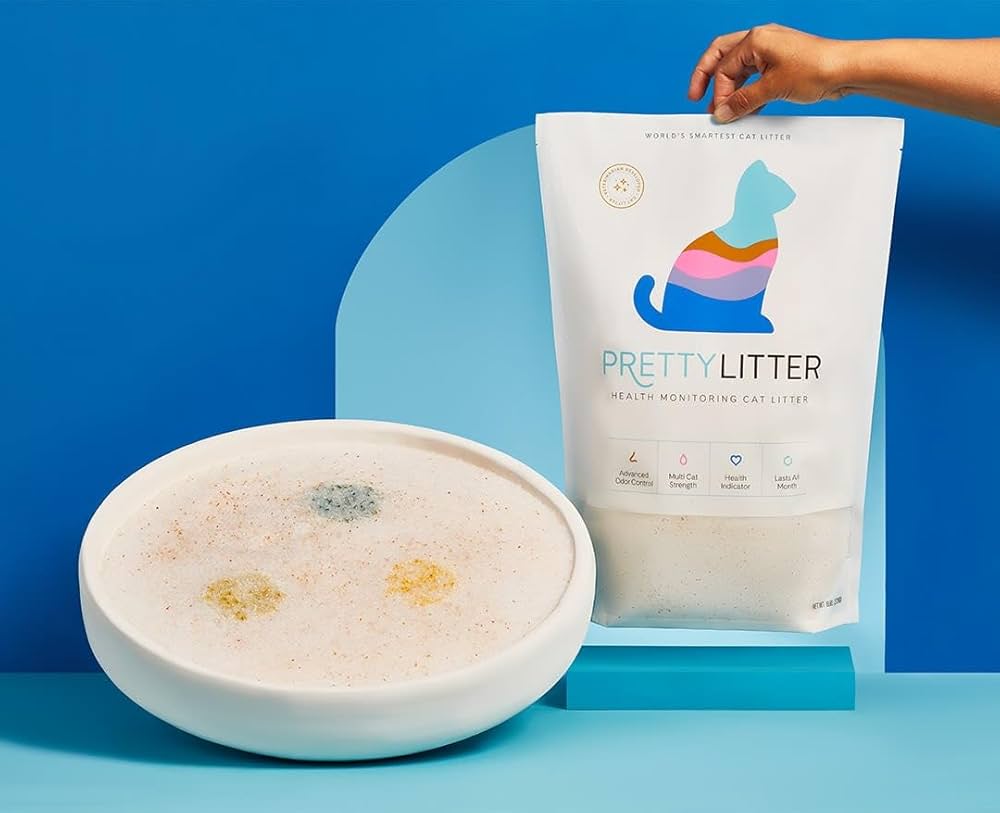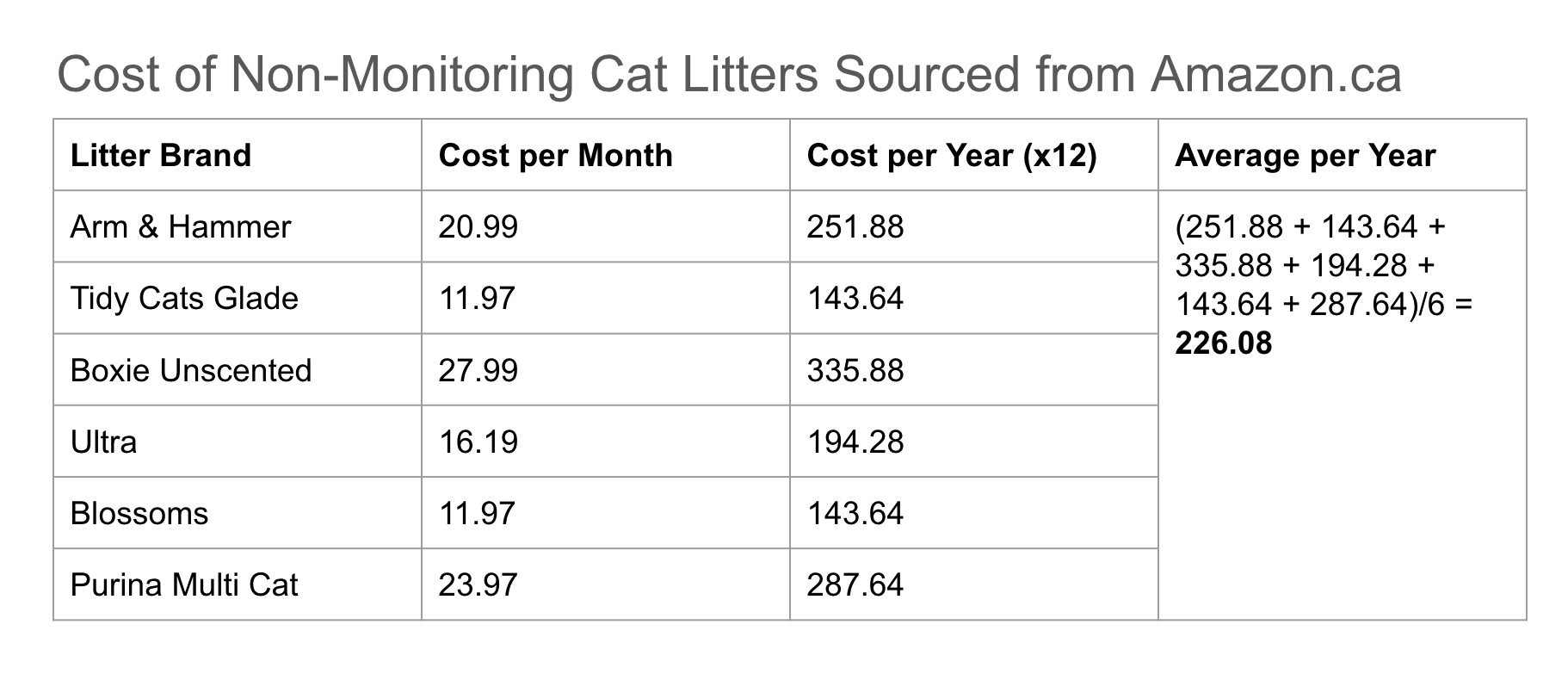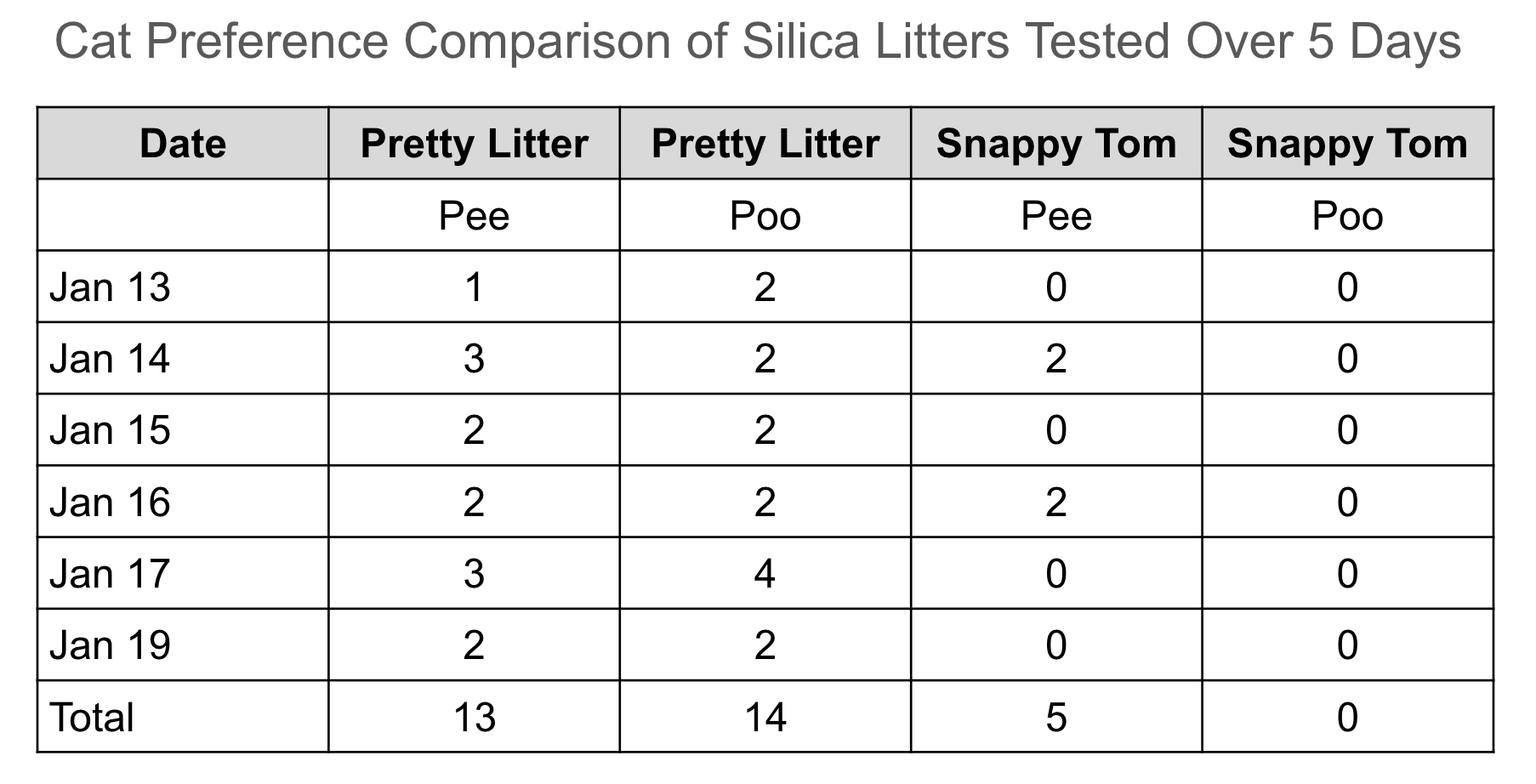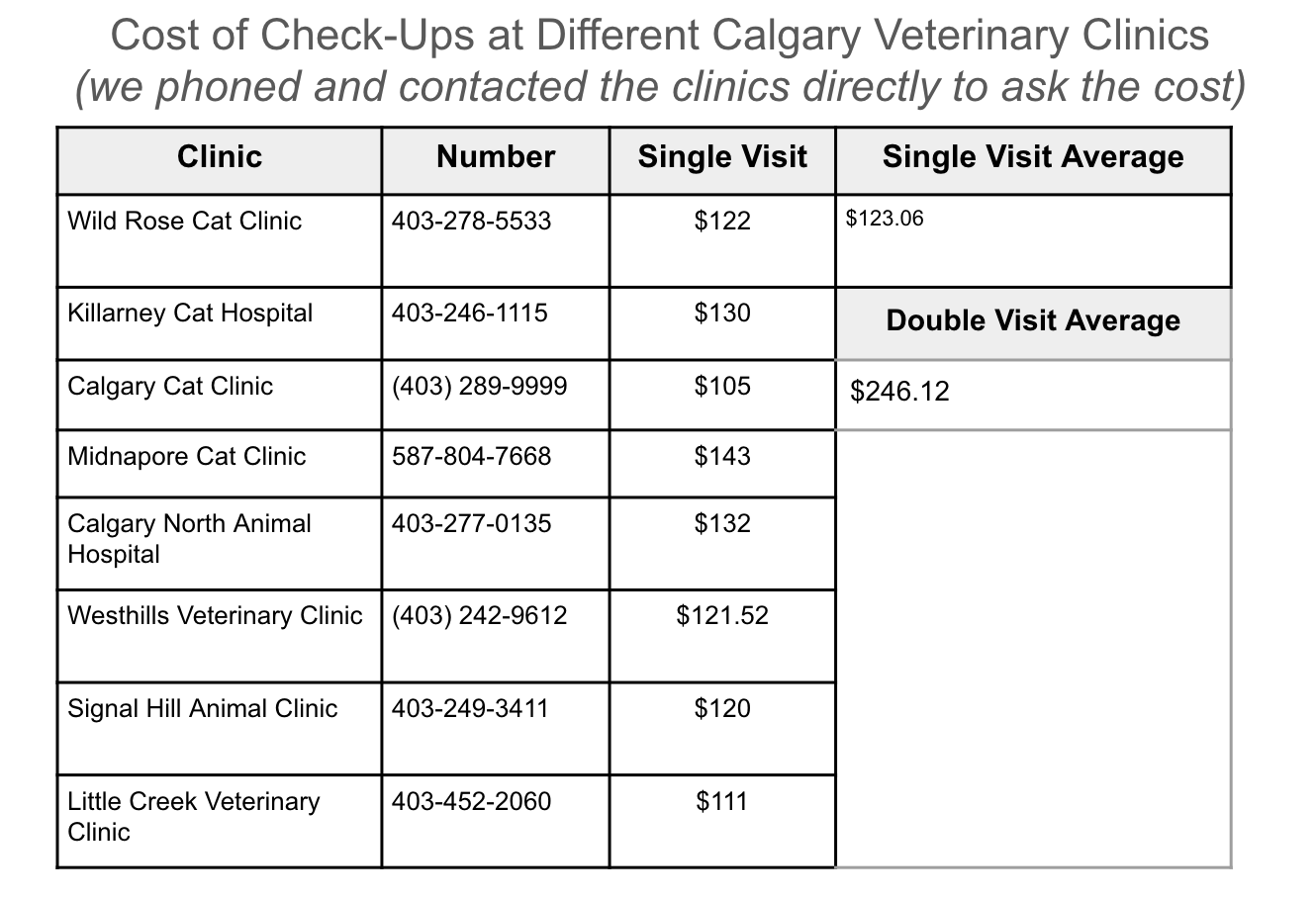Pretty Litter, Worth the Price?
Grade 7
Presentation
No video provided
Problem
In the wild, when an animal is sick it is vulnerable to predators. Sick or old animals make an easy target. For that reason, cats have evolved to hide signs of illness and pain. In the early stages of illness, cats may become more quiet and stay to themselves. Sometimes, house cats even try to run away. This makes it hard to tell when your cat is actually sick. The Veterinary Centres of America (VCA) recommends that you take your cat to the vet 2 times a year but this is expensive and often not possible if you are on a fixed income. I personally have 2 cats and our family never takes them for regular check-ups, only if they are sick. But how would we know if our cats are sick or not?
Our project will investigate Pretty Litter cat litter. Pretty Litter is different from other cat litters because it changes colour based on the pH of your cat's urine. It is made up of silica chips and that absorb urine. We want to determine if it is an effective means to determine if a cat is sick. We will also investigate if it is cost effective when compared to other methods of monitoring cat health (like going to the vet).

Method
We want to see if using Pretty Litter in place of another cat litter is an effective means to determine if a cat is sick. We will also investigate if it is cost effective when compared to other methods of monitoring cat health (like going to the vet).
To do this our project explores a couple of different questions:
- How does Pretty Litter work?
- Is Pretty Litter an effective means to determine if your cat is sick or healthy?
- Is Pretty Litter cheaper than taking your cat to the vet twice a year for wellness check-ups?
- Do cats genuinely prefer Pretty Litter?
To investigate question 1 we will:
- Google Pretty Litter to see how it works and why it was created.
- Research Pretty Litter, look at their website,
- Look at the ingredients listed on the bag
- Research how the silica crystals change colour.
To investigate Question 2 we will:
- Create solutions with different pH levels to determine if the color changes in the litter reflect the actual pH of the solution
- Contact a few veterinarians to see if they have any information about pet owners bringing cats in due to the use of Pretty Litter
- Contact the Pretty Litter company to see what information they can provide beyond what is on their website and marketing materials
To investigate question 3 we will:
- Figure out the cost of a bag of Pretty Litter, then multiply that by how many bags are required for a cat for a year
- Contact at least 10 different veterinarians in Calgary to see the cost of a wellness check-up for a healthy cat and multiply this by 2
- We will also look at cheaper kitty litter and add the cost of the cheaper litter to this total
- Create a chart to show the annual cost of both
To investigate question 4 we will:
- Place two identical litter boxes in the same area: one with pretty litter and one with another biodegradable litter (they must be clean, identical boxes, and should be placed side by side (they should not be too close) so smells do not mix
- Track the cat's behavior:
- How many times did the cat go to a specific box out of the two identical ones (So that we can see what litter the cat likes)
- Avoidance behavior (if the cats refuse one box for one reason)
- Switch the location of the boxes (to make sure it isn't the location)
- Make a graph with the x axis being the time spent and y axis the no. of times the cat went into each box
Research
Cat Health Research
According to international cat care, the average life span of an indoor cat is 13 to 20 years. They can also live up to as old as 30 years. According to PetMD an indoor cat's lifespan can be impacted by nutrition, preventative care and even their spay or neuter status. Cats are generally good at taking care of themselves but some common ailments that impact indoor cats are vomiting, feline lower urinary tract diseases (FLUTD), fleas, tapeworms, diarrhea and eye problems (webmd). Of these six common ailments only FLUTD is invisible, you can't tell if your cat is suffering from it. According to WebMD estimates say as many as 3% of cats seen by vets have FLUTD, which is a group of feline diseases with multiple causes.
Cat urine provides clues about a cat's health, and Pretty Litter is designed to react to the difference in urine’s chemistry when something is wrong. Since cats are notoriously good at hiding pain and illness, a litter that tests urine can be a valuable tool for a concerned cat owner.
Blood - If there is blood in the urine (from an injury or disease), it can indicate issues such as a urinary tract disorder, bladder cancer, or internal injury. Blood may not be visible to the naked eye, but Pretty Litter would turn red.
Acidic - If your cat’s urine is unusually acidic, that can indicate metabolic problems (Pretty Litter will turn orange).
Alkaline - If your cat’s urine is abnormally alkaline, that could mean a urinary tract infection (Pretty Litter will turn blue).
Our project won't investigate blood in pretty litter, due to CYSF safety policies but we will look at liquids with different pHs to see how well the colour changing properties of Pretty Litter work.
To test how effective Pretty Litter is in detecting issues with cat urine we want to test liquids with different pHs. We will pour 1 tablespoon of 4 different household liquids of various pH levels into ½ cup of litter to see how well the litter detects it.
Liquids
- Lime juice pH of 1.8 to 2.2
- Apple cider vinegar pH of l 2 to 3
- Dish Soap pH of 8 to 9.5
- Clorox Bleach pH of 13
The clorox turned slightly blue and clumped together more than the other liquids. The Apple Cider Vinegar sunk mostly to the bottom. The colour change is very subtle, but there is a change and it does match the colours of the pretty litter monitoring scale.

(From the Pretty Litter Website)
Based on what we saw, we think you would be able to tell if there was a change in your cat’s pH.
Typical cat urine has a pH of 6.0 to 6.5
The following paragraph is copied from Petfoodshop.com:
“There are several ways to monitor the pH of your cat's urine. This can be tested by a vet, who would provide the most accurate results (compared to other methods). However, visits to the vet can be quite expensive, because there is the cost of the visit in addition to the cost of the test. Monitoring pH on an ongoing basis with the vet might be cost-prohibitive. Another option is to have pH tested at home with either pH strips or a special litter that changes colour according to urine's acidity. These solutions are not perfect because they have limited accuracy, but they do provide cat owners with some sense of pH.”
The Bottom Line:
- Urinary health issues are very common in cats (#1 illness)
- The primary cause of urinary issues is inadequate hydration
- Urinary problems are preventable with proper hydration
- Feed cats moist food either from cans, or by soaking dry kibble in water
- Use cat water fountain
- Add fresh/pureed veggies to cat's meals
- Urine pH must be kept in the range of 6.0 - 6.5 to avoid formation of crystals
- Plant-based diets tend to make urine more alkaline, so vegan cats may need additional acidifiers (examples - cranberry powder, vitamin C, etc.)
- Monitor pH at your vet, or at home with strips or by using a special pH litter that changes color
The website rover.com did a review on Pretty Litter and had lots of great information. Pretty Litter is a privately-held Los Angeles company, founded in 2015. Working with veterinarians, they developed a litter that would help cat parents keep tabs on their kitties’ health. The first bags of litter shipped to consumers in 2016 (rover.com). Rover warns that Pretty Litter does not diagnose the health issue. It only lets you know that indicators are present in the urine and something might be wrong. To find out what’s wrong, and if it can be treated, you would need to take your cat to the vet. But maybe it would be effective to use Pretty Litter all the time, so that instead of taking your cat to the vet twice a year, you only have to take your cat to the vet when they need it.
Pretty Litter Research
Purchasing - Pretty Litter is delivery-only, purchased online on a subscription basis directly from PrettyLitter.com. You’ll need one bag of litter per cat per month.
Cost - Pretty Litter starts at $28 per bag, delivery included. There are slight discounts if you are ordering multiple bags per month. This is more expensive than many other cat litters and we do a price comparison in our data section.
Appearance - Pretty Litter is made of silica gel crystals and looks like fine, bright-white sand. It’s also very lightweight, which makes it easy to handle the bag and the litter box. This might be an important consideration for owners with mobility or strength issues.
Cleanup - Pretty Litter is non-clumping, so when you scoop the litter you’ll be removing cat poop and mixing the urine spots (yellow, if your cat is healthy) back into the litter. We scoop out the poop and flush it down the toilet. So you don't need to deal with garbage bags. At the end of the month, you put the litter in the trash, clean the box, and pour a new bag in.
Odor Control - Pretty Litter is almost completely odourless at the beginning of the month, but by the end of the month it starts to take on a bit of a smell.
Tracking - this is one thing Pretty Litter isn't great at. The little crystals sometimes get stuck in cats' paws and they will track some outside of the box. Pretty Litter recommends using a Mat.
Longevity - Pretty Litter says one bag will last one cat for a month, in our house that is true. We use one bag every two weeks for our two cats. We scoop the cat poop daily, sometimes twice a day, and mix the urine back into the litter, and at the end of two weeks it is still working.
Cat-Appeal - Our cats have been using pretty littler for more than 2 years now. But we did test a different silica gel cat littler for a week to see if our cats would show preference for Pretty Litter.
- Bought a non-pretty litter silicon litter from our local pet store for 29.99
- Wash out two identical litter boxes and let them dry.
- Filled 1 litter box with 20 cups of Pretty Litter
- Filled 1 litter box with 20 cups of Snappy Tom Litter
- Will monitor over the next week to see if my two cats, sibling Siamese cats approximately 3 years-old, have a preference for which box they use
Control Variables - amount of litter, box size, box placement, cleanliness of the boxes before adding the litter, both are silica based litter
Manipulated Variable - Type of litter used
Responding Variable - amount of cat pee and cat poo in each box
Observations:
- Snappy Tom was very dusty when poured into the litter box
- Snappy Tom has bigger silica pieces and some are blue
- Pretty Litter has small pieces and some are a light pink
Cost Effectivness
Cost of a year supply of Pretty Litter for 1 Cat in Canada
Cost of Pretty Litter - 28.70 Canadian per bag
For 1 year with pretty litter and one cat it costs
28.70 x 12 = $344.40
Is Pretty Litter cheaper than taking your cat to the vet twice a year for wellness check-ups?
Compared to sand cat litter (which is cheaper than silica cat litter), these are the costs for a monthly amount of the following:
Arm & Hammer Cat Litter - 20.99
Tidy Cats Glade Cat Litter - 11.97
Boxie Unscented Odour Control - 27.99
Ultra - 16.19
Blossoms Cat Litter - 11.97
Purina Multi Cat - 23.97
Average Cost: 18.84
A Year Supply of the cheapest Sand litter
11.97 x 12 = 143.64
A Year supply of average
18.84 x 12 = 226.08
Compared to Pretty Litter, the cheapest sand litter will cost you 200.76 less.
344.40 - 143.64= 200.76
Compared to Pretty Litter, the average cost of sand litter will cost you 118.32 less.
Average cost of vet visits if a cat goes twice a year for check-ups
We contacted local Veternarian Clinics in Calgary to see what the cost of a visit to the vet would be. Then we took the average of those costs to see if it was cheaper or more expensive than using a pH monitoring litter.
Data




Conclusion
Our project was to investigate Pretty Litter cat litter. We wanted to determine if it was an effective means to determine if a cat is sick. We also investigated if it was more cost effective when compared to other methods of monitoring cat health (like going to the vet).
In our pH testing we discovered that Pretty Litter is in fact reliable and an accurate means to see the pH of your cat's urine. Urinary health issues are very common in cats. Urine pH must be kept in the range of 6.0 - 6.5 to avoid formation of crystals. Monitoring pH through the use of Pretty Litter could give you a heads-up and let you know to take your cat to the vet.
When comparing Pretty Litter to another Silica cat litter my cats definitely showed a preference for Pretty Litter. They used the Pretty Litter 27 times over 5 days and Snappy Tom only 5 times over 5 days. Neither of my cats ever used the Snappy Tom to poo, just pee. This shows a clear preference for Pretty Litter. However it should be noted that my cats are used to Pretty Litter and it is possible they just picked the litter they are familiar with. To better test if cats prefer Pretty Litter, a future experiment could test Pretty Litter vs. Snappy Tom on different cats who have never used those silica cat litters before.
Our last area of focus was to see if Pretty Litter was a cost effective way of monitoring cat health. According to the VCA you should take your cat in for regular check-ups twice a year. In our research we discovered that the average cost of Pretty Litter for a year was $344.40, whereas the average cost of cheaper litters for a year was $226.08. To see if Pretty Litter was cost effective we subtracted the price of Pretty Litter from the price of the cheapers litters and got a difference of $118.32. We called eight different Veterinary clinics in Calgary to determine the cost of taking your cat in for a regular check-up. The lowest cost was $105.00 and the average cost per visit was $123.06. This cost, for one single visit, is more than the difference between Pretty Litter and a cheaper non-monitoring litter. If you followed the VCA's advice, it would cost you $246.12 a year for regular cat check-ups.
We want to acknowledge that Veterinary care for cats is important, but we also want to acknowledge that it is expensive, and some of the clinics we called are not even accepting new patients. So while Pretty Litter can not take the place of Veterinarian check-ups, it might be a good alternative for monitoring your cat's health in between less frequent visits. Responsible cat owners should take other variables into consideration such as whether their cat is an indoor or outdoor cat, the age of their cat or if their cat is exhibiting weird behaviours.
Citations
Pretty Litter Website:
https://www.prettylitter.ca/?srsltid=AfmBOooWVcLpXvtst9_r4m6OD0nryU4u_cHRs5xQG87EwcSPl3CWQ9NN
Causes of Kidney Failure in Cats:
https://www.guilfordjamestownvet.com/site/blog-greensboro-vet/2021/06/30/kidney-failure-in-cats
Common Cat Diseases:
https://www.aspca.org/pet-care/cat-care/common-cat-diseases
Recognizing Signs of Illness in Cats:
https://vcacanada.com/know-your-pet/recognizing-signs-of-illness-in-cats
Comparison of Different Litters
https://cats.com/best-cat-litter
Healthy cats
https://icatcare.org/cat-advice/cat-life-stages
WebMD
https://www.webmd.com/pets/cats/6-most-common-cat-health-problems
Recognizing signs of sickness
https://vcacanada.com/know-your-pet/recognizing-signs-of-illness-in-cats
Vet costs
https://www.pawlicy.com/blog/vet-visit-cost/
Feline urine values
https://jn.nutrition.org/article/S0022-3166(22)15211-9/fulltext
Acknowledgement
We want to thank Clayton's mom for helping us do the research and giving us ideas. Sam's mom for getting our trifold and helping us transport it. Ms. Holmes and Ms. M for giving us time to work on our project and registering us for Science Fair.




